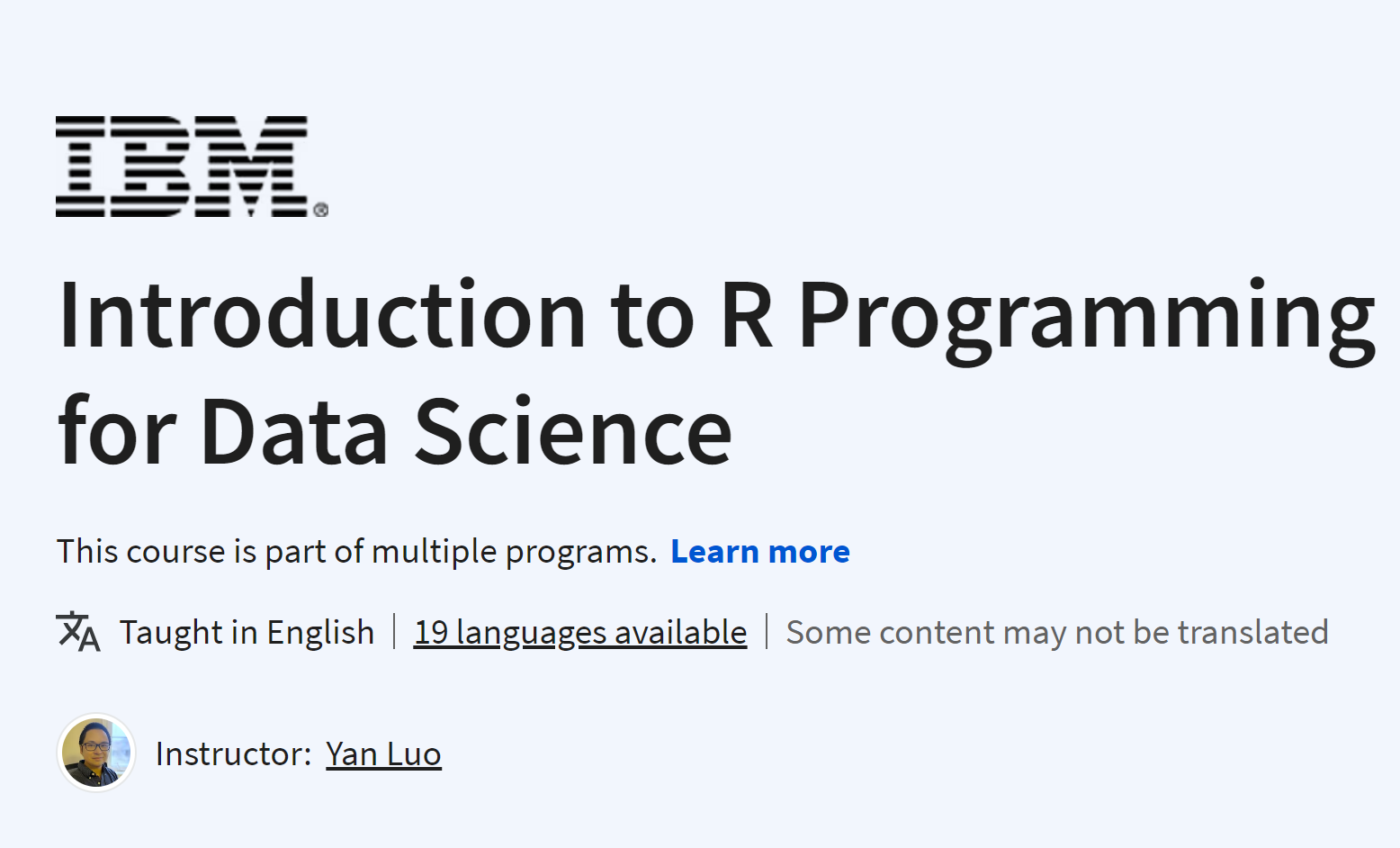What you'll learn
Manipulate primitive data types in the R programming language using RStudio or Jupyter Notebooks.
Control program flow with conditions and loops, write functions, perform character string operations, write regular expressions, handle errors.
Construct and manipulate R data structures, including vectors, factors, lists, and data frames.
Read, write, and save data files and scrape web pages using R.
Join Free:Introduction to R Programming for Data Science
There are 5 modules in this course
When working in the data science field you will definitely become acquainted with the R language and the role it plays in data analysis. This course introduces you to the basics of the R language such as data types, techniques for manipulation, and how to implement fundamental programming tasks.
You will begin the process of understanding common data structures, programming fundamentals and how to manipulate data all with the help of the R programming language.
The emphasis in this course is hands-on and practical learning . You will write a simple program using RStudio, manipulate data in a data frame or matrix, and complete a final project as a data analyst using Watson Studio and Jupyter notebooks to acquire and analyze data-driven insights.
No prior knowledge of R, or programming is required.






.png)


















.png)















0 Comments:
Post a Comment